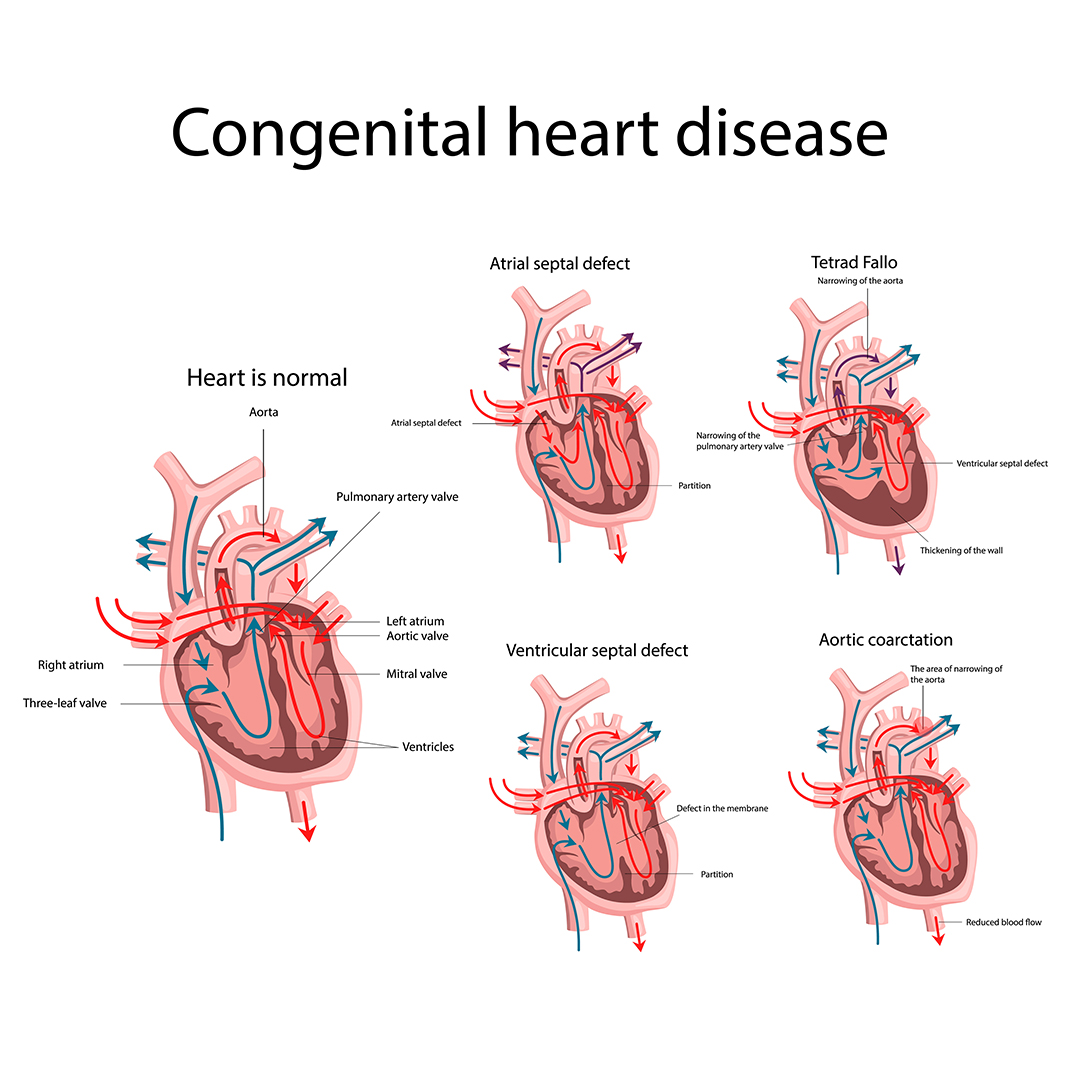A congenital heart defect (CHD), also known as a congenital heart anomaly or congenital heart disease, is a problem with the structure of the heart that is present at birth. Congenital means “present from birth.” Heart defects can involve the walls of the heart, the valves of the heart, and the arteries and veins near the heart. Many children born with CHDs have no signs or symptoms at birth. However, some defects are severe enough to cause congestive heart failure, arrhythmias, or stroke in newborns.
The most common type of CHD is a ventricular septal defect (VSD). A VSD is a hole in the wall (septum) that separates the right and left sides of the lower chambers (ventricles) of your child’s heart. Blood flows through this hole from the left ventricle into the right ventricle and then out to the body through pulmonary arteries instead of going to their lungs first for oxygenation. The extra blood going to their lungs makes it harder for their hearts to pump and puts stress on their hearts and lungs. Most children with VSDs have no symptoms at birth but may develop shortness of breath or exercise intolerance later in childhood as their cardiac output increases demands on their respiratory system due to growth spurts. If left untreated, some children with VSDs develop congestive heart failure or serious complications such as endocarditis or stroke later in life.
CHDs can vary greatly in severity, from tiny holes that close on their own soon after birth to complex problems that require multiple surgeries over many years. In general, more complex CHDs are more likely to require surgery soon after birth while simpler ones may not need intervention for months or even years. Some babies born with CHDs will need lifelong care by pediatric cardiologists and other specialists even if they don’t require surgery right away


